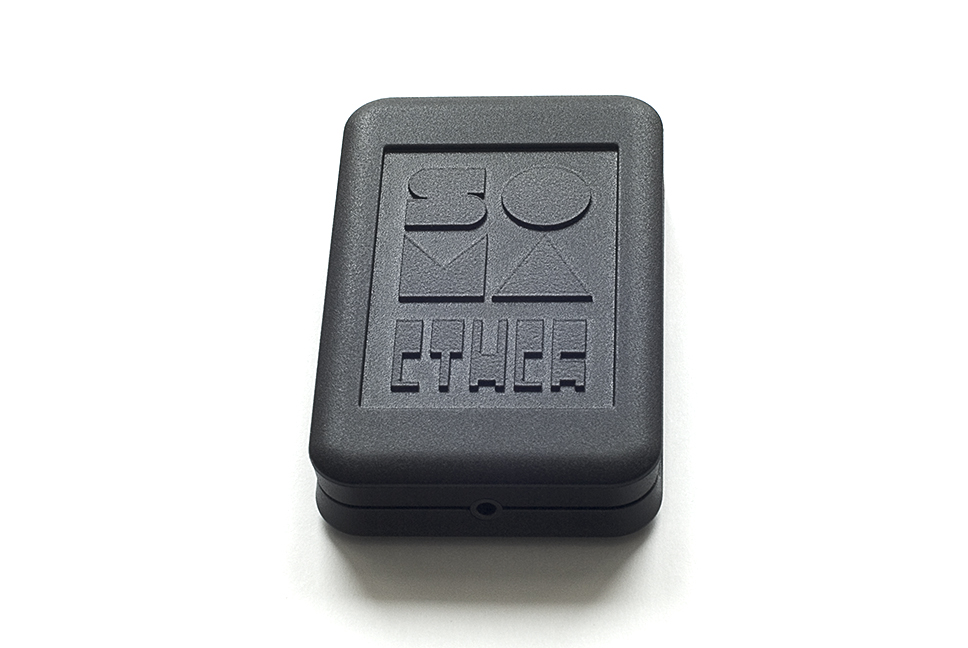Electronics are redefining what “sound” means – by remapping other signals into our audible spectrum. The latest is SOMA’s invention Ether, a “microphone” for electromagnetic fields. If that sounds familiar, this one’s a bit different than some EMF devices that came before.
Here’s a look at the new Ether. It’s a new creation from SOMA Laboratory, the same Russian instrument builder who have give us the gorgeous “organismic” LYRA synths. (I covered them in the Russian Synthposium write-up last year.)
First, let’s talk electromagnetic fields. Just like gravity, these fields extend throughout nature. Since we have electricity and electrically-charged stuff pulsing all around us, there’s a lot happening in the electromagnetic field. But we can’t perceive that, because our bodies lack sense organs equipped to do so – well, until now, that is. Now we’ve invented devices that translate to things we can sense. Think of it as expanded sensory perception for the transhumanist, technologically augmented age.
Various artists have built electromagnetic detectors that you can use for music – both by listening directly with headphones, and by letting you plug that signal into a recorder or use in live performance. That includes the superb (and stereo) ElecktroSluch by LOM Label and artist Jonáš Gruska, who both makes these instruments available and has built a body of works around them on his label (both by him and invited artists).
https://cdm.link/2016/03/latest-microphones-unlock-an-unheard-world/
https://lom.audio/instruments/elektrosluch/
Part of what makes Jonáš special, though, is his interest in delicate sounds and focused sounds – that’s something he applies to his acoustic microphones, as well.
So here’s where the SOMA Ether becomes interesting.
The invention of engineer Vlad Kreimer, the Ether is a portable EMF device. But it’s much more sensitive than other offerings – making it well suited to picking up larger ambiences in recording or live performances. It works on a slightly different technique, and yields different results.
Vlad himself sends along an explanation to make this clearer:
ETHER is not just an inductive sniffer like some projects you can easily find online. A simple low-frequency inductive sniffer will be silent in most places that are full of sounds in the video. Such devices need to be placed close to an emitting source and will not work on a street. All they contain is a coil and a low-frequency amplifier. In comparison, ETHER has a regenerating circuit and a demodulator, making it an actual radio wave receiver, not just an amplifier of low-frequency magnetic fields. However, ETHER can perceive the low-frequency magnetic fields as well. But, honestly, if your goal is to scan objects in close proximity (0-20 centimetres), devices like Elektrosluch will work cleaner and more focused due to its narrow band and lower sensitivity. ETHER was designed to be a part of your walks in the city and may even pick up sounds in a forest or at the seashore (I have such experience). Elektrosluch was designed for using over a table full of gear. Also, ETHER can perceive the electric component of the radiation as well, capturing radiation that is far above the audio range and is much more sensitive. Therefore, it has a significantly different design, functions and implementation than a simple inductive sniffer even if in some cases their functions can overlap.
Ether is a monophonic instrument, but its other uniqueness feature is the design of antenna – the pin at the front Soma says lets you touch stuff and experiment more.
Devoted EMF fans I can imagine carrying both the Ether and something like an ElectroSluch to capture different sounds, a bit like photographers carry multiple lenses. (Oh yes – this addiction is about to run deep. Or you can think about the difference between a double bass and an oboe.)
As you can hear in the demo, you get these sweeping, overlapping waves of EMF with some really fantastic distortion – punk electromagnetism.
120 EUR, available to order now. (VAT and shipping are additional.)
